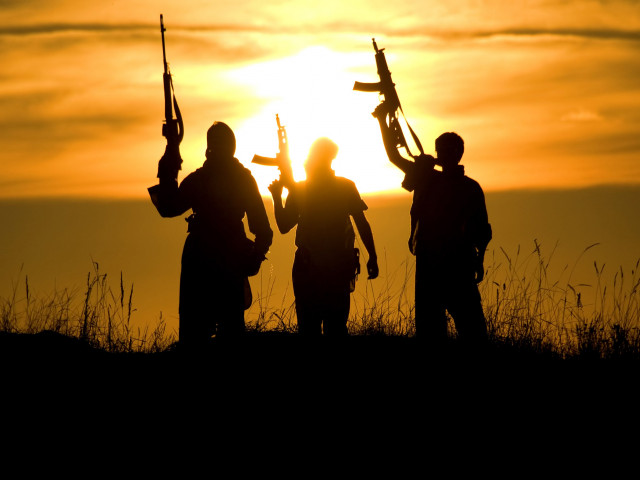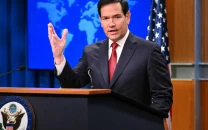Pakistan saw 31% reduction in terrorism in 2019, report
Think tank says civilians continue to bear brunt of terror attacks

Pakistan saw 31% reduction in terrorism in 2019, report
In its annual report, released on Monday, the think-tank said that during the year, a 30.71 per cent drop in fatalities was observed in 2019, down from 980 last year to 679 this year.
Even though they have been merged, but the report noted that if Khyber-Pukhtunkhwa (K-P) and the erstwhile federally administered tribal areas (Fata) are counted as separate regions, then Balochistan emerges as the region most affected by militancy and insurgency with 226 fatalities this year. This, however, still presents a drop of 44.2 per cent in fatalities, down from 405 fatalities in 2018.
After Balochistan, the largest drop in fatalities was seen in the newly merged tribal districts (NMTDs) with a change of 39 per cent, from 192 recorded last year to 117 this year.
Pakistan turned tide against terrorism, supports efforts for global peace: FM
Sindh saw a drop of 19 per cent, from 121 cases in 2018 to 98 in 2019. Similarly, Punjab saw an 11.83 per cent drop in fatalities, from 93 in 2018 to 82 in 2019.
In K-P, there was a 5.13 per cent fall in fatalities, from 156 in 2018 to 148 in 2019.
Curiously, Islamabad saw an uptick in violence, registering seven fatalities in 2019, as opposed to just six fatalities in 2018.
Gilgit-Baltistan showed the most improvement, going from seven fatalities in 2018 to no fatalities this year.
Nearly 370 terror attacks were reported during 2019 that left 518 people dead in the country. This, however, was a 30 per cent drop from the 739 fatalities caused by nearly 400 terror attacks in 2018.
Suicide-attacks also declined significantly this year, dropping from 26 in 2018 to just nine this year. These attacks also resulted in fewer casualties, from the 295 people killed in 2018 to only 56 people perishing in these attacks in 2019.
Suicide attacks, though, still maintained a higher ratio of attacks to deaths of 6.22 to 1.4.
Civilians, however, continued to be the most affected by terrorism and terror-related incidents. However, overall civilian fatalities from terror attacks declined by about 36.28 per cent from 521 in 2018 to 332 in 2019.
Fatalities amongst government and security officials also dropped by 19.25 per cent, from 239 in 2018 to 193 in 2019.
Fatalities of militants and insurgents also saw a drop of 30 per cent, from 220 in 2018 to 154 in 2019.
The month-wise data of terror attacks showed that May was the bloodiest month of the year with 82 fatalities. It was followed by January with 80 and April with 76. In fact, April presented the highest upwards change of 33.33 per cent, from 57 fatalities in 2018.
Last year, July was the bloodiest month with 238 fatalities. However, this year, there were only 49 fatalities, a change of 79.41 per cent.
In 2019, no drone attack was reported as compared to four drone attacks last year resulting in the death of 13 militants. This is quite significant, as this marks the first year since 2004 that there have been no drone strikes (as of December 30, 2019).
Only two militant outfits, splinter groups of the Tehrik-e-Taliban Pakistan (TTP) and the Islamic State (IS) continued claiming responsibilities for terror attacks. Together, they claimed responsibility for 13 terror attacks. However, the number of these attacks and associated fatalities dropped significantly. IS claimed a single attack while TTP and its splinter groups Hizbul Tahrir and Jamat-ul-Ahrar claimed 12 attacks.
However, the group said that in conducting these attacks, the ranks of these outfits were depleted by nearly 30 per cent. Moreover, civilian fatalities in these attacks declined by about 36 per cent.
Resurgence of terrorism: why?
One of the causes in bringing militancy under control was the apprehension of outlaws belonging to various banned outfits during this year.
Of the 141 militants arrested, 32 were TTP, 11 were Lashkar-e- Jhangvi, three were al Qaeda in the Indian Sub-Continent (AQIS), four were IS, two were affiliated with the Balochistan Liberation Army (BLA), and five were linked to the Baloch Republican Army (BRA).
Additionally, 24 militants belonging to Jaish-e-Muhammad (JeM) and two from Jamatud Dawa (JuD) were arrested.
Published in The Express Tribune, December 31st, 2019.



















COMMENTS
Comments are moderated and generally will be posted if they are on-topic and not abusive.
For more information, please see our Comments FAQ